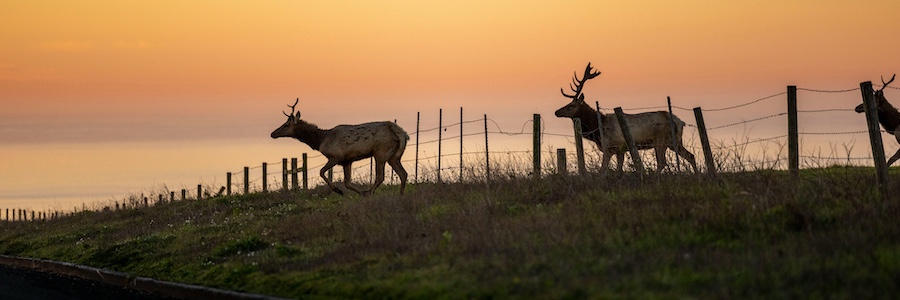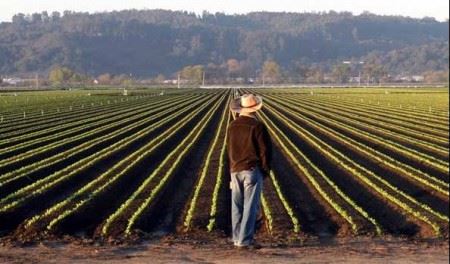A long-standing agricultural tradition in Point Reyes National Seashore is coming to an end following a recent decision by the National Park Service (NPS). Earlier this year, 12 of the 14 operating ranches in the region were ordered to close as part of a settlement agreement, effectively bringing an end to over 150 years of cattle ranching in the area. The move follows legal action from environmental groups arguing that livestock operations negatively impact the ecosystem, particularly the Tule elk population. While conservation advocates view this as a victory for wildlife and land preservation, the closure has left local farmers facing an uncertain future.
A Legacy of Agriculture in Point Reyes
Since 1886, dairy and cattle farms in Point Reyes have played a crucial role in supplying food to the Bay Area and surrounding communities. Marin County has long upheld strict agricultural policies, including required Use Permit inspections to ensure compliance with environmental and safety regulations.
Sustainable agriculture expert Joe Stewart highlights Marin’s long history of responsible farming and the county’s commitment to sustainable practices.
“The way agriculture is done in Marin is highly intentional and environmentally conscious,” Stewart explained. “We have regulations requiring organic vegetable farming, we avoid genetically modified organisms, and our dairy sector leads the way in sustainability. Farming has been a key part of Marin’s history and remains relevant today.”
Farmland Reduction and Cattle Removal
According to reports from KQED News, the settlement will significantly reduce the amount of land used for agriculture in the national seashore—cutting it down by approximately 85%. This will involve the removal of cattle and ranching infrastructure from about 16,000 acres, with the number of cows in the area dropping from roughly 10,000 to just 200. The NPS will oversee the process, and affected ranchers have just over a year to cease operations.
Agriculture remains a major part of Marin County’s identity, with approximately 55% of its land designated for farming. However, the reduction of ranching in Point Reyes marks a significant shift in how the land is managed moving forward.
The Debate Over Conservation vs. Agriculture
The decision to phase out ranching in the park has sparked debate over how to balance environmental protection with agricultural heritage. While some argue that cattle operations harm native species and disrupt natural ecosystems, others believe that sustainable ranching could coexist with conservation efforts.
“The ranches that have violated environmental laws should be held accountable, but shutting down all agricultural operations—some of which have responsibly managed the land for generations—may be too extreme,” said a local environmental advocate.
The growing divide between conservationists and agricultural communities reflects a broader debate seen throughout California in recent decades. Some believe that increased regulations and oversight would be a more balanced approach rather than removing ranches altogether.
Ranchers Face an Uncertain Future
With the deadline for closure approaching, affected ranchers must quickly find new opportunities—whether through relocating, transitioning to different industries, or seeking alternative uses for the land. For many, the loss of their livelihoods presents significant challenges obviously.
Legal Battle Over the Settlement
Not all ranchers are accepting the settlement without a fight. William Niman, founder of Niman Ranch, and his wife, Nicolette Hahn Niman, have filed a lawsuit against the National Park Service, challenging the legality of the decision to phase out ranching on 28,000 acres of Point Reyes land.
According to the lawsuit, the NPS failed to comply with the National Environmental Policy Act by making substantial changes to land use without conducting additional environmental impact studies. The suit argues that the government’s decision will cause harm to the region’s agricultural heritage, local food supply, and community livelihoods.
“This is a major misstep by the Park Service—essentially walking away from agriculture in an area where it has thrived for nearly two centuries,” said Hahn Niman.
The Niman ranch is one of only two remaining cattle operations in Point Reyes that did not receive a buyout offer from The Nature Conservancy, which facilitated the transition of ranchers off the land. The NPS has stated that it will negotiate long-term leases with the Nimans and the D. Rogers Ranch, the only other remaining operation. However, the lawsuit claims that new restrictions—such as limits on herd size, composting, and cover cropping—may make ranching in the area financially unsustainable.
The Nimans also take issue with the NPS’s decision to remove fencing that previously restricted Tule elk from grazing on farmland. Conservation groups have long argued that the elk should roam freely, while ranchers worry that the increased presence of elk could lead to conflicts over grazing resources.
Broader Legal Challenges and Public Backlash
The lawsuit filed by the Nimans is not the only legal action challenging the recent settlement. Attorney Andrew Giacomini has also filed a complaint, alleging that the National Park Service and The Nature Conservancy conspired to pressure ranchers into giving up their 20-year leases. The complaint also raises concerns about the displacement of agricultural workers—many of whom are Latino residents who have lived and worked on these ranches for years.
Opponents of the settlement argue that the decision was made without sufficient public input. “This process was pushed through behind closed doors, without a fair opportunity for the public to weigh in,” said Albert Straus, founder of Straus Family Creamery.
On the other hand, conservation groups maintain that the decision reflects the public’s demand for prioritizing natural resource protection over private enterprise on public lands.
“Some ranching advocates continue to spread misleading information and ignore the overwhelming public support for restoring these lands to their natural state,” said Chance Cutrano, director of programs at the Resource Renewal Institute. “This settlement represents a step forward in preserving the integrity of Point Reyes National Seashore for future generations.”
The Future of Ranching in Point Reyes
The debate over ranching in Point Reyes highlights broader questions about land use, environmental conservation, and sustainable agriculture. While some view the closures as necessary to protect native ecosystems, others argue that well-regulated ranching could continue to play a role in the park’s landscape. However, ranching the area has been a tradition for nearly 175 years.
For now, the future remains uncertain. As the last legal battles to unfold and conservation efforts move forward, one thing is clear—Point Reyes is at a crossroads, and the decisions made this year will shape its identity for generations to come.







